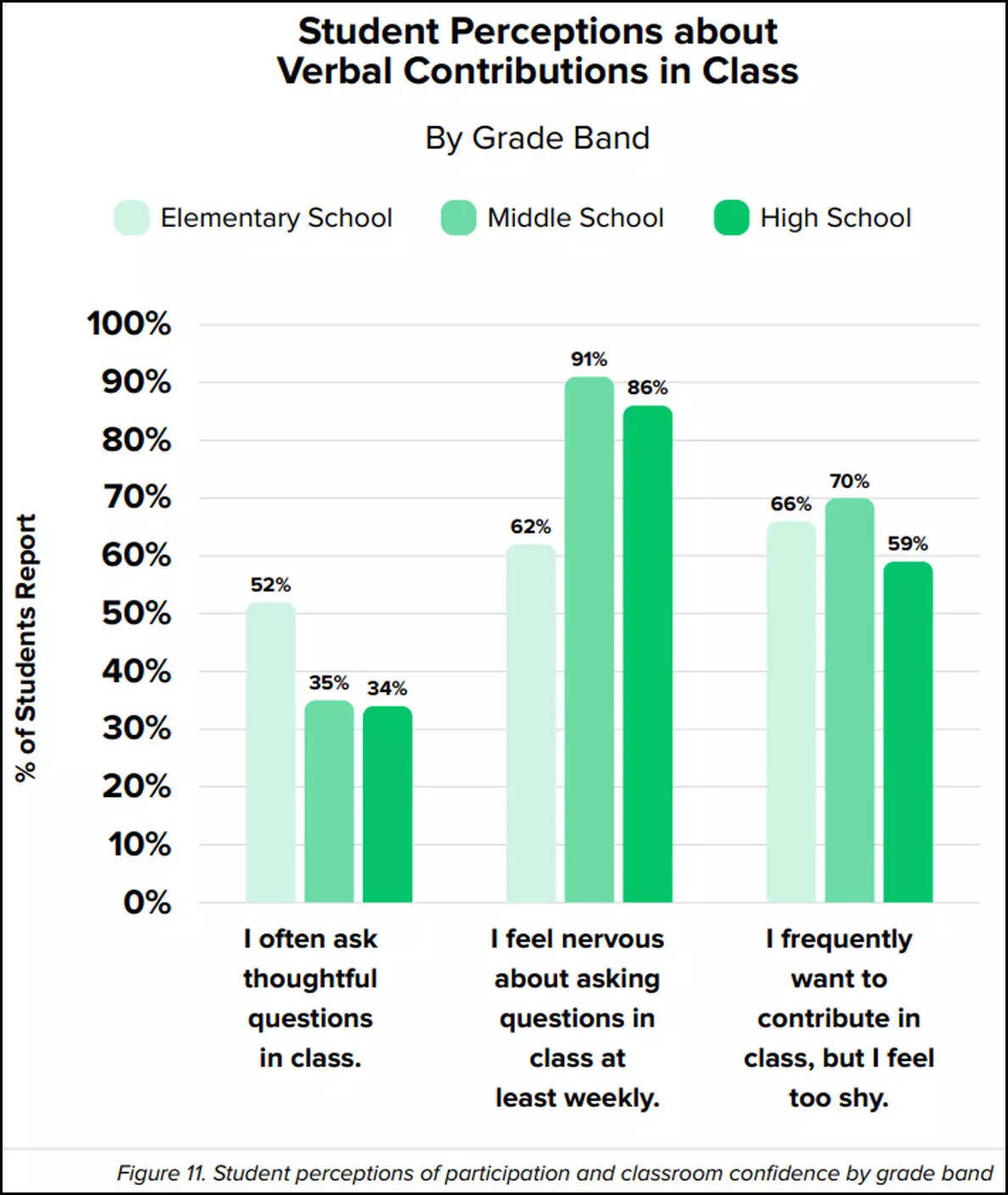
American middle schoolers are the most disengaged: How 91% feel too nervous to ask questions and what teachers miss
American middle school students face the highest levels of classroom anxiety and disengagement across all educational stages, with 91% reporting they feel nervous about asking questions in class at least weekly, according to new research. This represents a 29-percentage point increase from elementary school students, highlighting a critical developmental shift that occurs during early adolescence.The findings reveal a stark disconnect between how students experience learning and how educators perceive their engagement levels. Whilst 59% of middle school students report feeling highly engaged in their learning, only 36% of their teachers believe students are genuinely engaged, creating a 23-point perception gap that widens compared to elementary education.Middle school marks critical transition point for student participationThe research, based on Education Insights 2025-2026: Fueling Learning Through Engagement, shows that middle school represents a pivotal stage where students begin shifting from active to passive forms of disengagement. The study, which captures perspectives from 1,398 K-12 superintendents, principals, teachers, parents, and students across the United States, was conducted by Hanover Research on behalf of Discovery Education in May 2025.Student nervousness about classroom participation peaks during middle school years, with data showing a dramatic increase from elementary levels. Only 62% of middle school students report often asking thoughtful questions in class, compared to 66% of elementary students, despite teachers rating questioning as their top indicator of student engagement.Teachers struggle to recognise quieter forms of engagementMiddle school educators report the highest frequency of students expressing negative attitudes towards school compared to other grade levels. Teachers observe this negativity more than students self-report, suggesting educators may be interpreting quiet or internalised forms of engagement as disinterest.The data reveals significant gaps between what teachers value as engagement indicators and what they actually observe in classrooms. Whilst 72% of teachers rate asking thoughtful questions as the strongest sign of engagement, only one-third report seeing this behaviour frequently, particularly in middle and high school settings.Perception gap in student engagement and anxiety by grade level

Disengagement patterns shift from social to passive behavioursMiddle school teachers report unique challenges as student disengagement begins transitioning from overtly social behaviours to more passive forms. Whilst elementary students typically show disengagement through chatting with peers (76%) and acting out (68%), middle school represents a pivotal stage where both traditional disruptions and emerging passive behaviours appear at similar rates.Phone usage during class time increases by 30 percentage points in middle school compared to elementary levels, whilst incidents of students sleeping in class rise noticeably. This shift reflects both developmental factors and increased access to personal devices that create private channels for disengagement.Teachers in middle schools also report competing with social media for students’ attention more than their elementary counterparts, with 76% citing this as a frequent challenge. The research indicates that as students mature, they often mask disinterest through avoidance behaviours rather than open resistance, making disengagement harder to detect and address.The findings suggest that middle school students may be experiencing heightened social awareness and self-consciousness typical of early adolescence, when young people become increasingly concerned about peer perception and social evaluation, ultimately inhibiting their willingness to participate verbally in classroom settings.




